Hop Picking in Worcestershire
- 31st August 2022
Modern hop pickers are the focus of a photo exhibition in The Hive’s atrium, so we thought we’d look how hops are represented within our collections. Hops have been an important crop in several parts of the county, such as the Teme Valley, since at least the 18th century, often alongside orchards. Evidence can be found in the name of several pubs and in some of the surviving architecture on farms. There have always been people who have come to help with the harvests.
Hops are also well represented within the archives, and within the Historic Environment Record, reflecting the importance they played. Several projects have included this subject, and we’ve supported others who have investigated and celebrated the role this crop locally.
Hop Picking
Before mechanisation hop picking was labour intensive, requiring a larger labour force than was available locally. Hop picking attracted many Gypsies, Roma and Traveller people who would time their arrival in the hop growing areas to coincide with picking season – around 6 weeks in September/October.
People also came from The Black Country and the Welsh Valleys. Women, children and unemployed men would come to earn some money for a few weeks, as well as have an opportunity to spend time in the countryside.
Many growers built a long term relationship with their pickers, who would return to the same farms year after year. The larger growers would charter a railway train to bring their pickers to the farm and take them back home at the end of the season.
Hops were measured in bushels and put into sacks for transport to the kilns for drying. The number of bushels picked was recorded by the picker on a tally stick. This was later matched to the one by the tallyman and a notch cut on the edge of both so people could be paid the correct amount
Hop picking changed due to competition from foreign hops, a devastating hop disease, new hop picking machines and standardised school holidays. Far fewer people were needed, although there would always be a small temporary workforce.
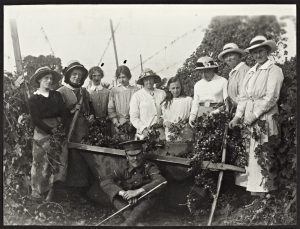
Hop picking in 1917. Due to the war there was even more reliance on women to help with harvesting, including the newly formed Land Army.
Hopmarket Hotel, Worcester
Even before the imposing four-storey Hopmarket Hotel was built at the turn of the 20th century, hop merchants were buying and selling local produce on the site as far back as the 1730s. On an opposite building, former hop merchant office, is a frieze featuring hop picking.
Harvesting The Past
In 2009/10 Worcestershire Record Office ran an oral history project looking at agriculture in 1930s, 1940s and 1950s Teme Valley and West Worcestershire. Interviews were undertaken with people about their memories of life and work in the past. The resulting interviews, as well as being placed in the archives for safekeeping and future reference, were also shared so that the stories and heritage were celebrated within the local community and wider. It was turned into a play, a CD and reminiscence resource to keep the stories alive.
Hops were important to this area and featured many times in stories we were told, especially stories of gypsies and people from the Black County who would return each year to pick them.
Sheila Smith (77) came hop picking from Tipton to Shelsley Beauchamp for the first 21 years of her life. She was a little nervous about whether the students would be able to understand her Black Country accent but she really enjoyed the experience. “It surprised me that they had no knowledge about hop picking and how it used to be. There are no books to get the information from so I was proud to be able to tell them what it was like in my day. It was a treat to think they were so interested. The boys in particular wanted to know about the air raids and how we lived back then. I could have talked to them all afternoon!”
David Powell befriended a young German man called Reinhold Mullecker who cycled out to the Powell’s farm every day from Tenbury. David has vivid memories of Reinhold fearlessly scaling the perry trees and digging holes by hand for the hop poles. David still treasures the violin and toys that Reinhold carved him in the 1940s, and all these years later, the two of them are still in touch.
Worcestershire Farmsteads and Landscapes Project Report
This report, which we produced for Historic England, looked at the evidence for farmsteads in the historic landscape, and highlighted key questions and the importance of recording surviving agricultural buildings. With changes in agriculture many of these buildings no longer have any practical use so are at risk. With these changes happening, it is important to understand patterns of farmsteads and how they change in different areas before they are lost.
Hop kilns are some of those buildings which are at risk, with changes in numbers of farms growing them, and changes in they way they are harvested and processed.
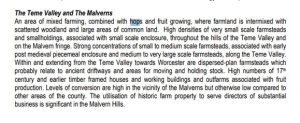
Worcestershire Farmsteads Project
The Worcestershire Farmsteads Project consists of a team of volunteers who go out and record farm buildings, as well as researching them in the archives. Hop kilns and associated structures are some of those they have surveyed, some of which have new uses, whilst others are abandoned. The information is then passed to the Historic Environment Record so that it is recorded for the future.
Films
During Worcestershire on Film screenings we have shared several films of hop picking from MACE (Media Archive for Central England), some of which were originally deposited within the archives here. On one occasion a lady spotted herself and he brother as children in film footage taken in the 1950s to her delight! The notes only said Worcestershire, but the lady could tell us that it was near Bransford.
1950s hop picking in Worcestershire
1971 ATV report on Hop Picking in Worcestershire and looking at the future
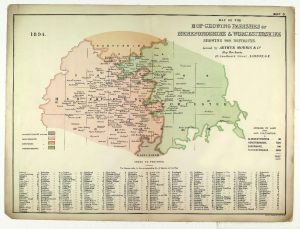

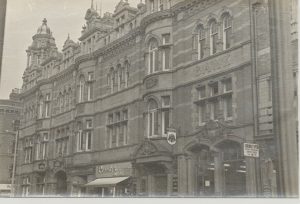
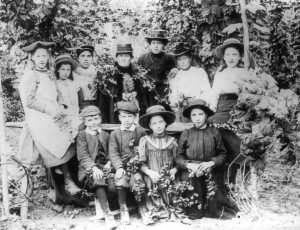
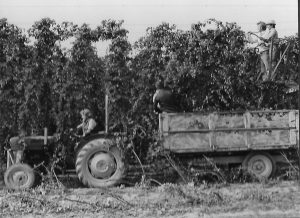
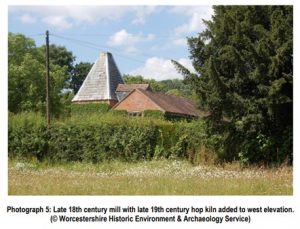
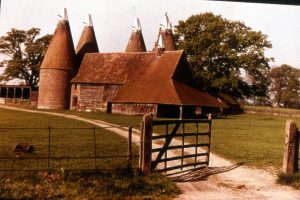
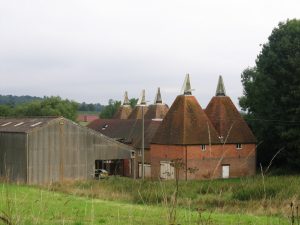
Post a Comment